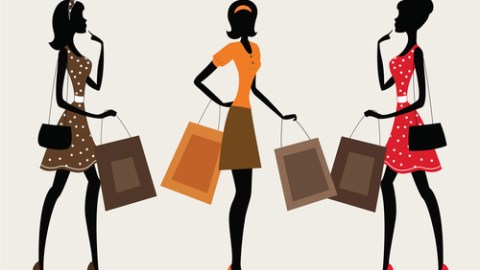Disrupting Black Friday: What She Wants, Whenever She Wants It

Black Friday came earlier than ever this year, with big box stores opting to open the floodgates to shoppers while the gravy was still warm on Thanksgiving Day. That led one analyst to complain that retailers “have basically ruined every holiday.” After all, you can’t have your turkey and eat it too if you need to jockey for position in line at Target.
And yet, while Black Friday may still be the Super Bowl of retail, the shopping stampedes we have come to associate it with are becoming more of a sideshow as an increasing number of consumers are buying what they want, wherever they may be, whenever they want it. For this reason and others, Black Friday sales figures — and the headlines they generate — are a less important (or at least less clear) economic indicator than ever before. (For what it’s worth, according to some “occasional vignettes” posted on The New York Times blog The Lede throughout Thursday evening, the demand for early shopping on Thanksgiving Day at a number of Manhattan retailers was underwhelming.)
So what are the changes happening in retail that are truly significant and what should we look for — whether we’re thinking as consumers or business owners — in order to read the economy and where it is heading this holiday season? We turned to Big Think’s chief economist Daniel Altman.
Here’s what he told us at a recent taping at Big Think’s office:
What’s the Big Idea?
Black Friday isn’t what it used to be. It used to be the time when everybody went out after Thanksgiving and began their holiday shopping.
The reason it started to get longer and longer — starting earlier in the morning and later at night — is that bricks and mortar stores were the only place where people could go to shop. Retailers can reach consumers at any time of the day — whatever time is most convenient for the consumers — through the Internet. And it’s not just the same old big retailers like a Walmart or a Best Buy. You have a lot of other smaller retailers that also offer their products over the Internet, and they reach consumers with different types of deals every day. In fact, you can probably expect that the Black Friday shopping really started back on the previous Cyber Monday, and might extend all the way until the following Cyber Monday, with consumers shopping at many different hours of the day, and with many different retailers.
So if you want to get an idea of how big the boost is to the economy that may come from the shopping this week, you have to look at a much broader set of opportunities to shop, and a much longer time period.
As a result, those statistics that you’re going to read about the next day are not as useful as they used to be. You should look to statistics covering the whole week, and that might give you an idea of how strong the shopping really is.
What’s the Significance?
One of the things that we often look for in an economic recovery is consumers buying durable goods — things that last a long time — because most consumers tend to put off those types of purchases during a downturn. Those purchases tend to be higher ticket items, so that’s a logical thing to do. You want to wait until you are on firm economic footing before you make an investment like that.
So looking at durables, and also housing — which is the ultimate durable — is a good way to see how confident people are that the economy is going to stay on an even keel. But spending is not the only thing that matters to our economy. We need saving as well to create growth for the future. What we want to look for in the long term is a nice balance between saving and spending that’s steady over time that suggests we’ll be in a nice long boom for several years.
Image courtesy of Shutterstock
Follow Daniel Altman on Twitter @altmandaniel





